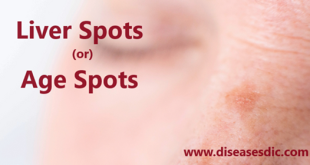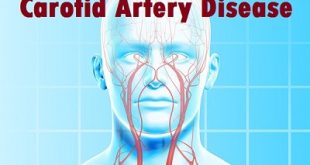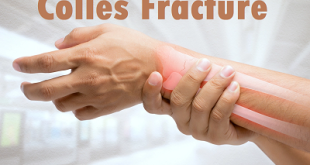What are corns and calluses?
Corns and calluses are annoying and potentially painful conditions that form thickened areas in the skin in areas of excessive pressure. The medical term for the thickened skin that forms corns and calluses is hyperkeratosis (plural=hyperkeratoses). A callus refers to a more diffuse, flattened area of thick skin, while a corn is a thick, localized area that usually has a popular, conical or circular shape. Corns, also known as helomas or clavi, sometimes have a dry, waxy, or translucent appearance. A callus is also known as a tyloma.
Corns and calluses occur on parts of the feet and sometimes the fingers. Corns are often painful, even when they are small. Common locations for corns are
- On the bottom of the foot (sole or plantar surface), over the metatarsal arch (the “ball” of the foot);
- On the outside of the fifth (small or “pinky”) toe, where it rubs against the shoe;
- Between the fourth and fifth toes. Unlike other corns that are firm and flesh-colored, corns between the toes are often whitish and messy; this is sometimes called a “soft corn” (heloma molle), in contrast to the more common “hard corn” (heloma durum) found in other locations.
Pathophysiology
Corns are the result of mechanical trauma to the skin culminating in hyperplasia of the epidermis. Most commonly, friction and pressure between the bones of the foot and ill-fitting footwear cause a normal physiological response – the proliferation of the stratum corneum. One of the primary roles of the stratum corneum is to provide a barrier to mechanical injury.
Any insult compromising this barrier causes homeostatic changes and the release of cytokines into the epidermis, stimulating an increase in the synthesis of the stratum corneum. When the insult is chronic and the mechanical defect is not repaired, hyperplasia and inflammation are common.
With corns, external mechanical forces are focused on a localized area of the skin, ultimately leading to impaction of the stratum corneum and the formation of a hard keratin plug that presses painfully into the papillary dermis, which is known as a radix or nucleus.
The shape of the hands and feet are important in corn (clavus) formation. Specifically, the bony prominences of the metacarpophalangeal and metatarsophalangeal joints often are shaped in such a way as to induce overlying skin friction. As corn formation ensues, friction against the footwear is likely to perpetuate hyperkeratosis. Repetitive motion can produce callosities, as would be seen in musicians.
What causes corns and calluses?
The small bones of the toes and feet are broader and lumpier near to the small joints of the toes. If there is repeated friction or pressure on the skin overlying a small rough area of bone, this will cause the skin to thicken. This may lead to corns or calluses forming.
The common causes of rubbing and pressure are tight or ill-fitting shoes which tend to cause corns on the top of the toes and side of the little toe.
Also, too much walking or running which tends to cause calluses on the bottom of the feet (the soles). So if you do sports or activities that involve repeated pressure on your feet then this will increase your risk of developing a callus.
Corns and calluses are more likely to develop if you have very prominent bony toes, thin skin, or any deformities of the toes or feet which cause the skin to rub more easily inside shoes.
People with bunions are more likely to develop corns and calluses.
What are the Risk Factors for Corns and Calluses?
Common risk factors associated with Corns and Calluses include:
- Presence of bunions, hammertoes, clubfoot, or mallet toes
- Congenital foot abnormalities
- Advancing age
- Farmers, rowers, or musical instrument players, who use hand tools or instruments, for long periods (without wearing suitable protective gloves/gear) exposing the skin to excessive friction
It is important to note that having a risk factor does not mean that one will get the condition. A risk factor increases one’s chances of getting a condition compared to an individual without the risk factors. Some risk factors are more important than others.
Also, not having a risk factor does not mean that an individual will not get the condition. It is always important to discuss the effect of risk factors with your healthcare provider.
Signs and symptoms
Corns and calluses can make a person feel as if they are walking on stones.
The following signs or symptoms may indicate that there is a corn or callus:
- A raised, hardened bump
- A thick and rough area of skin
- Skin that is flaky and dry or flaky and waxy
- Pain or tenderness under the skin
If a corn or callus becomes very inflamed or painful, the patient should seek medical advice.
Patients with poor circulation, fragile skin, or nerve problems and numbness in the feet should talk to their doctors before treating corns and calluses at home.
People with diabetes, peripheral neuropathy, and peripheral arterial disease need to be particularly watchful.
What are the Complications of Corns and calluses?
Though corns appear to be a minor health problem, they can take a severe shape if not treated in due time. Experienced podiatrists have found neglected corns, later on, give rise to worsening conditions like:
- Pain
- Bursitis
- Osteomyelitis
- Septic arthritis
How are Corns and Calluses Diagnosed?
Diagnostic methods that a physician may use to help diagnose Corns and Calluses include:
- Physical examination: A thorough physical examination of the hands or feet is usually adequate, to diagnose Corns or Calluses. In addition to this, a complete medical history may aid in arriving at a definitive diagnosis
- X-ray of the hand or foot: A physician may order an x-ray, to see if any underlying bony abnormalities are causing this condition
- Biopsy of the hand or foot: Occasionally, a biopsy may be necessary to rule out the possibility of a viral wart, or an underlying cyst. The biopsy specimen is examined under the microscope, by a pathologist
Many clinical conditions may have similar signs and symptoms. Your healthcare provider may perform additional tests to rule out other clinical conditions to arrive at a definitive diagnosis.
Treatment
Treatment for corns and calluses usually involves avoiding the repetitive actions that caused them to develop. You can help resolve them by wearing properly fitting shoes, using protective pads and taking other self-care measures.
If a corn or callus persists or becomes painful despite your self-care efforts, medical treatments can provide relief:
- Trimming away excess skin. Your doctor can pare down thickened skin or trim a large corn with a scalpel, usually during an office visit. Don’t try this yourself because it could lead to an infection.
- Callus-removing medication. Your doctor may also apply a patch containing 40 percent salicylic acid (Clear Away, MediPlast, others). Such patches are available without a prescription. Your doctor will let you know how often you need to replace this patch. He or she may recommend that you use a pumice stone, nail file or emery board to smooth away dead skin before applying a new patch. You can also get a prescription for salicylic acid in gel form to apply on larger areas.
- Shoe inserts. If you have an underlying foot deformity, your doctor may prescribe custom-made padded shoe inserts (orthotics) to prevent recurring corns or calluses.
- In rare instances, your doctor may recommend surgery to correct the alignment of a bone causing friction.
Lifestyle and home remedies
If you have diabetes or another condition that causes poor blood flow, consult your doctor before treating corn and callus on your own.
If you have no underlying health problems, try these suggestions to help clear up a corn or callus:
- Use over-the-counter pads. Apply a pad to protect the area where corn or callus developed. Be careful using over-the-counter (nonprescription) liquid corn removers or medicated corn pads. These contain salicylic acid, which can irritate healthy skin and lead to infection, especially in people with diabetes or other conditions that cause poor blood flow.
- Soak your hands or feet. Soaking your hands or feet in warm, soapy water softens corns and calluses. This can make it easier to remove the thickened skin.
- Thin thickened skin. During or after bathing, rub corn or callus with a pumice stone, nail file, emery board or washcloth to help remove a layer of toughened skin. Don’t use a sharp object to trim the skin. Don’t use a pumice stone if you have diabetes.
- Moisturize your skin. Apply moisturizer to your hands and feet to help keep the skin soft.
- Wear comfortable shoes and socks. Stick to well-fitting, cushioned shoes, and socks until your corn or callus disappears.
How Can I Prevent Corns and Calluses?
Here are some suggestions for preventing corns and calluses:
- To avoid corns and calluses on the feet, have both feet professionally measured at the shoe store and buy only properly fitting shoes.
- Be sure both shoe width and length are correct — for each foot since feet may be slightly different sizes. Allow up to a half-inch between your longest toe and the front of the shoe. If you can’t wiggle your toes in your shoes, they’re too tight.
- Shop for shoes at the end of the day when feet are typically most swollen.
- Avoid shoes with sharply pointed toes and high heels. Women who must wear stylish shoes at work can take some of the pressure off their feet by walking to the office in well-fitting athletic shoes. Try to decrease heel height as much as possible.
- Have shoes repaired regularly — or replace them. Worn soles give little protection from the shock of walking on hard surfaces and worn linings can chafe your skin and harbor bacteria.
- Worn heels increase any uneven pressure on the heel bone. If the soles or heels of your shoes tend to wear unevenly, see an orthopedist or podiatrist about corrective shoes or insoles.
- If you have hammertoes — toes that are buckled under — be sure that the shape of your shoes offers plenty of room to accommodate them.
- Calluses can happen on hands, so wear protective gloves if you use tools.
 Diseases Treatments Dictionary This is complete solution to read all diseases treatments Which covers Prevention, Causes, Symptoms, Medical Terms, Drugs, Prescription, Natural Remedies with cures and Treatments. Most of the common diseases were listed in names, split with categories.
Diseases Treatments Dictionary This is complete solution to read all diseases treatments Which covers Prevention, Causes, Symptoms, Medical Terms, Drugs, Prescription, Natural Remedies with cures and Treatments. Most of the common diseases were listed in names, split with categories.








Actually there is corn cap widely-used in such conditions which is easily available
I understanding well! iwill be carefully to wear the size Shoes√
this information is so helpful, i have the calluses, but haven’t find means of treating it, it really hurts..thanks for this information
anyone can you please help with my foot it’s been now 6 months
Kindly follow the treatment mensstioned in the article.
Is there any homeopathic treatment for corns and calluses? is there any way to treat it at home.
Please read the home remedies given in the article.
you should use shoma cream parmenantly
successful elemented corns I am so happy with the information you have provided, however I am very challenged with dry skin and callus on both feet in two spots each soaking makes them feel better however all the pedicare tools keep me busy daily and I feel that I am losing the battlefield.
please please please help me.
Hurting feet interfere with my quality of my life
GO for a natural treatment.
Much more informative article. In homeopaths Antimonium crude in CM potency 2 drops in a month is very effective. I had corns and cured by the same.
can any one help I have pain under my feets
Please consult a doctor to get treated with corns and calluses.
treatment for in between last tw0 toes corns.
Minor surgery for Trimming away excess skin. We would suggest you consult a physician for this kind of treatment.
What kind of medicine is recommended to treat the corn disease?
For the treatment of corns, over-the-counter topical salicylic acid preparations, such as medicated pads or solutions, are commonly recommended. These products help break down the thickened skin of the corn. It’s essential to follow the product instructions carefully and, if uncertain, consult with a healthcare professional for personalized advice. In some cases, professional intervention by a podiatrist may be necessary for more stubborn or painful corns.